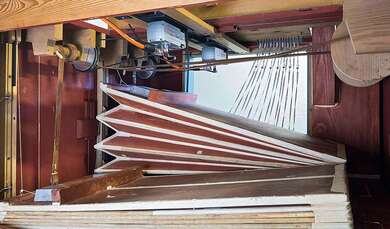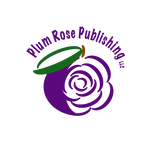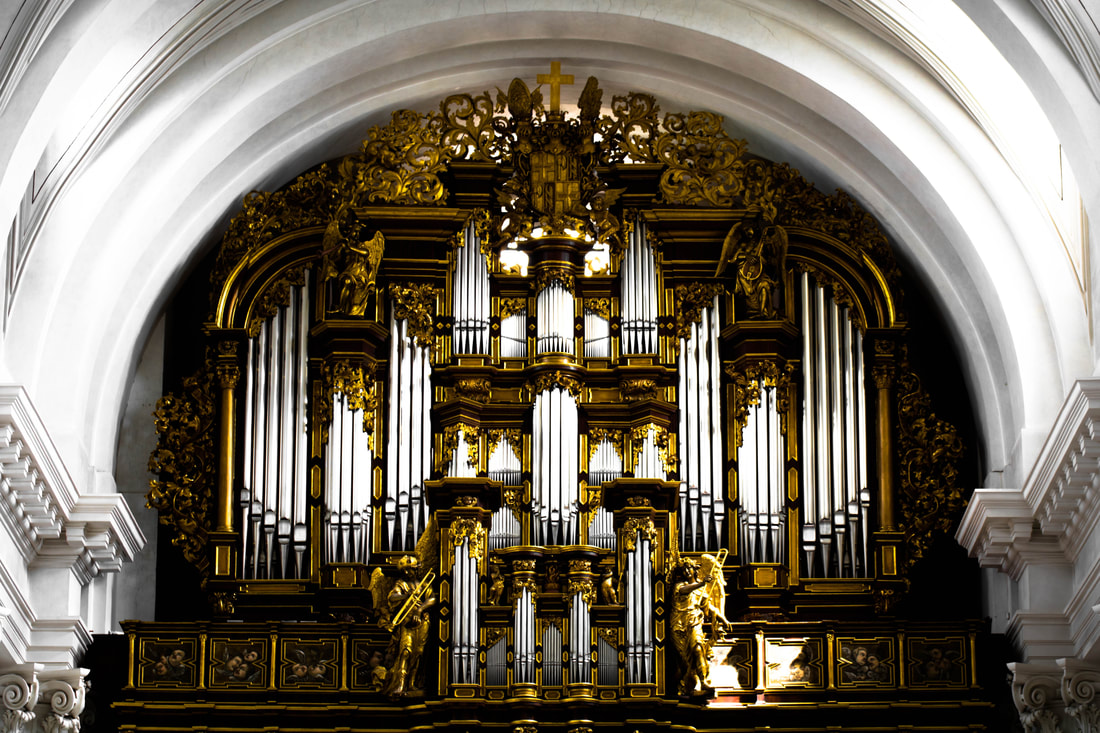 Hydraulis water system on pipe organ Hydraulis water system on pipe organ The pipe organ is a fascinating musical instrument with a rich history that has shaped music as we know it today. Its origins can be traced back to ancient Greece, where a water-powered organ called the hydraulis was used for public events and religious ceremonies. During the medieval period, the pipe organ became widely used in churches and monasteries as it gained popularity for its versatility and ability to produce a wide range of sounds. It was the "king of instruments" and played an important role in religious music during that time. Throughout the Renaissance, Baroque, and Classical periods, famous composers such as Bach and Handel wrote music specifically for the pipe organ, which continued to evolve with advances in technology. The pipe organ's most significant change during the medieval period was the introduction of the bellows, which replaced the hydraulis' water-powered system. This allowed for the development of different types of pipes, each with their unique sound and increased control over the instrument. Today, the pipe organ remains a highly regarded instrument in music education and is used in various genres of music. Many famous concert halls still feature working pipe organs, and there are organizations dedicated to preserving and restoring these beautiful instruments. The pipe organ is a unique and versatile instrument with a fascinating history that has played a significant role in the development of music. Whether in religious or secular contexts, it continues to inspire musicians and captivate audiences worldwide. One of the most famous organ composers from the medieval ages is Johannes de Garlandia, who lived in the 13th century. He was a French composer, music theorist, and organist known for his contributions to the development of organum, a type of early polyphonic music. Johannes de Garlandia wrote several treatises on music theory, including "De mensurabili musica," which discussed rhythmic notation and introduced a new system of notation called the Franconian notation. He also wrote several pieces of organ music, including "Salve Regina," a four-part polyphonic piece. Johannes de Garlandia's contributions to early polyphonic music and organ composition were significant, as his work helped lay the foundation for future composers in the centuries to come. His legacy continues to be recognized today, and his music is still performed and studied by music students and scholars around the world. Comments are closed.
|
�
AuthorBrian Trumble is an English teacher and lifelong writer. He plays saxophone, bassoon, and piano and is excited to partner with Plum Rose Publishing to teach and lead the next generation of musicians! CategoriesArchives
April 2023
|
|
Contact Us:
By Email: info@plumrosepublishing.com By Mail: PO Box 6917 Hudson, FL 34674 |
We use PayPal: PayPal accepts Debit or Credit Card
Price plus tax and shipping and handling
Price plus tax and shipping and handling
company id 100



 RSS Feed
RSS Feed